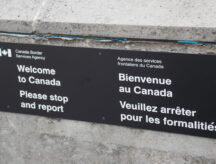There are jobs in smaller cities for new immigrants to Canada
Over the past twenty years, Canada has sought to encourage more immigrants to move to its smaller cities. The main tool it has used to pursue this goal has been the Provincial Nominee Program (PNP).
The PNP enables provinces and territories across the country to develop their own eligibility criteria for economic class immigrants and then nominate immigrants who meet their labour market needs for Canadian permanent resident status.
The PNP has been effective in reducing the share of immigration to Canada's three largest provinces (Ontario, Quebec and British Columbia) from 85 per cent when the program was launched in 1999 to about 70 per cent today.
Programs currently in place to promote immigration to smaller cities
On the other hand, Canada’s federal government and its provinces and territories recognize that more work can be done to promote immigration to smaller cities. This is evidenced by the fact that the federal government has launched many new programs in recent years such as the Atlantic Immigration Pilot (AIP), Rural and Northern Immigration Pilot (RNIP), and plans to launch new programs such as the Municipal Nominee Program (MNP).
Various provinces operate PNP streams to help cities outside of their respective capitals attract more immigrants. For example, Ontario will launch a new Regional Immigration Pilot under its PNP in early 2020. Ontario is pursuing this initiative because nearly 80 per cent of its immigrants go to its capital region (the Greater Toronto Area), which means that many cities across the province struggle to attract enough immigrants to support their economies.
64 per cent of new immigrants went to Toronto, Montreal, Vancouver, and Calgary in 2018
In 2018, 64 per cent of new immigrants to Canada settled in the country’s largest cities (Toronto, Montreal, Vancouver, and Calgary). This makes sense since immigrants look for four things and these cities score high in all of these categories: employment opportunities, existing immigrant communities, settlement supports, and adequate infrastructure such as public transportation.
It is clear, then, that Canada has more work to do to help new immigrants understand the benefits of building a life outside of large cities.
Find out if you are eligible for any Canadian immigration programs
Job opportunities in many smaller cities
The main priority for new immigrants to Canada is finding a job. Newcomers are attracted to the economic prospects of Canada's major cities, but they need to know that smaller cities can also offer excellent opportunities. In fact, they may find better job opportunities in smaller towns because they often have a greater need for workers.
These destinations also have fewer young Canadians, new immigrants and Canadians from other parts of the country to fill the vacancies left by the many aging Canadians who are retiring.
Consider that Canada’s unemployment rate stands at 5.7 per cent, which is historically low due largely to the country’s aging population and low birth rate.
The unemployment rates of the main destinations for newcomers are as follows:
- Toronto: 5.6 per cent
- Montreal: 6.0 per cent
- Calgary: 7.1 per cent
- Vancouver: 4.8 per cent
Only Toronto and Vancouver are currently outperforming the national average. However, as we will see below, settling in those two cities comes at a significant cost.
Many smaller cities in Canada have lower unemployment rates than the national average, which is something new immigrants should take into account when deciding in which community to build their lives:
- Moncton, New Brunswick: 5.1 per cent
- Quebec City, Quebec: 3.5 per cent
- Sherbrooke, Quebec: 4.7 per cent
- Trois-Rivieres, Quebec: 5.2 per cent
- Ottawa-Gatineau, Ontario/Quebec: 4.4 per cent
- Hamilton, Ontario: 4.5 per cent
- Catherines-Niagara, Ontario: 4.8 per cent
- Kitchener-Cambridge-Waterloo, Ontario: 5.2 per cent
- Brantford, Ontario: 3.8 per cent
- Guelph, Ontario: 5.6 per cent
- London, Ontario: 5.6 per cent
- Barrie, Ontario: 5.2 per cent
- Greater Sudbury, Ontario: 5.4 per cent
- Thunder Bay, Ontario: 5.0 per cent
- Winnipeg, Manitoba: 5.3 per cent
- Saskatoon, Saskatchewan, 5.7 per cent
- Kelowna, British Columbia: 4.2 per cent
- Abbotsford-Mission, British Columbia: 4.9 per cent
- Victoria, British Columbia: 3.4 per cent
An additional advantage for newcomers is that smaller cities have less competitive labour markets, which may enable newcomers to find employment faster than in larger cities.
Housing affordability
Although Toronto and Vancouver are particularly appealing to newcomers, the cost of living is very high. The biggest expense for Canadians and immigrants alike is housing, and in recent years Toronto and Vancouver have become less affordable cities. The average rent for a two-bedroom apartment in Toronto is now $1,600 and in Vancouver, it is about $1,800. Even if a newcomer can find a higher-paying job in these cities, they will spend much more on housing.
By way of comparison, the average rent for a two-bedroom apartment is about $900 in Moncton, $600 in Trois-Rivieres, $1,300 in Ottawa-Gatineau, $1,200 in Winnipeg, and $1,100 in Saskatoon. Even if you earn a lower salary in these cities, your income will allow you to afford more than in Toronto and Vancouver.
Quality of life
Another major advantage of settling in a smaller city is that newcomers can enjoy a better quality of life than if they had moved to a bigger city. Commute times may be shorter since there is less traffic, and newcomers can access a range of different activities based on their preferences.
Many smaller cities in Canada offer cultural and recreational activities similar to those in larger cities, but also offer outdoor activities such as skiing, hiking and access to beaches. In addition, it can be easier for newcomers to build friendships in such destinations since small communities may be more tight-knit.
Over 80 immigration programs to choose from
Despite the appeal of Toronto, Montreal, Calgary, and Vancouver, new immigrants should give strong consideration to moving to a smaller Canadian city instead. Newcomers have access to plenty of job opportunities in such cities as well as many immigration pathways to choose from. Canada currently offers more than 80 economic class immigration streams, many of which exist to encourage immigrants to build a life in smaller cities.
Find out if you are eligible for any Canadian immigration programs
Kareem El-Assal is the Director of Policy & Digital Strategy at Canadavisa. 
© 2020 CIC News All Rights Reserved
- Do you need Canadian immigration assistance? Contact the Contact Cohen Immigration Law firm by completing our form
- Send us your feedback or your non-legal assistance questions by emailing us at media@canadavisa.com






